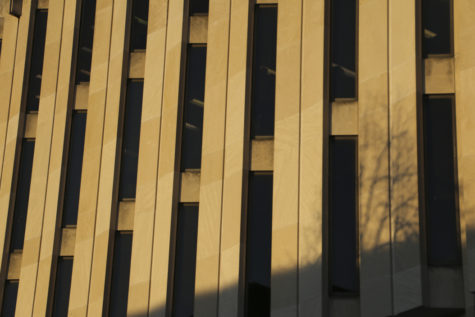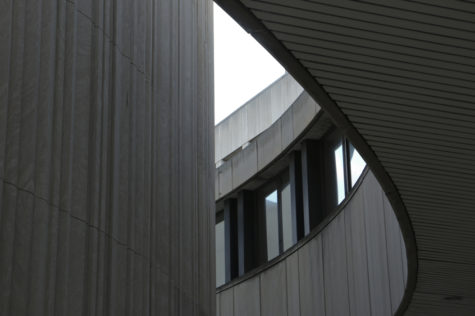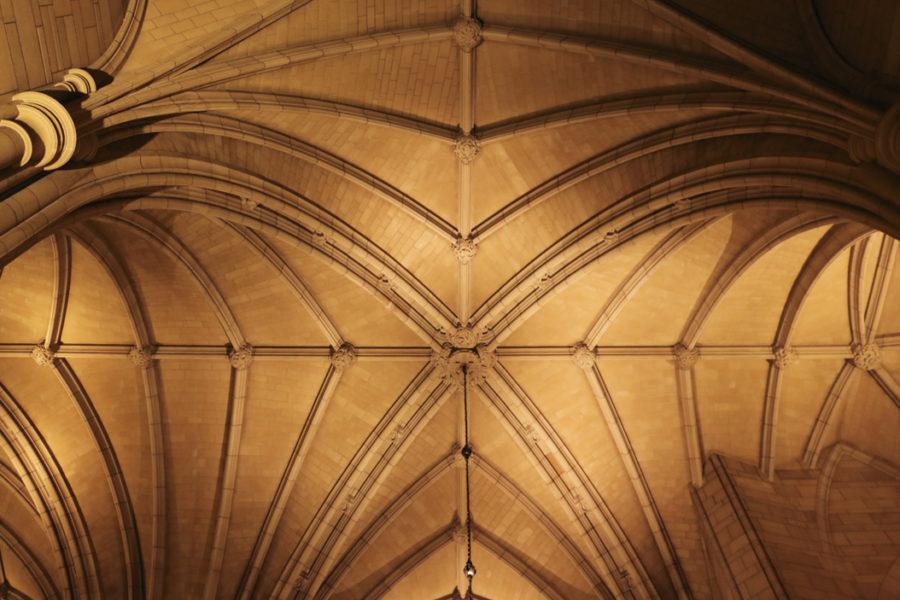When he has a big test ahead of him, Andrew Puglionesi walks into the common room of the Cathedral of Learning, finds a cozy spot at a long table near the right end of the high-ceilinged space and settles down for a night of studying.
Like most Pitt students, the junior computer science major has spent time deciding which work spaces are most comfortable and easy to use for a wide variety of classes and responsibilities. Finding the perfect spot often relies on a peripheral aspect of student life that we don’t often consider: the architecture and interior design of academic buildings.
“I’ve always loved the architecture in the Cathedral, especially on the first floor,” Puglionesi said. “It just has a really nice atmosphere, and I feel pretty comfortable there.”
There is research and expertise to back up Puglionesi’s pickiness — Pittsburgh’s most experienced minds in architecture and interior design say that certain buildings can seriously affect the way students on campus work within them.
Every detail of classroom design — from the placement of windows to the distance from the front of the room to the back — is important. For example, the U.S. Department of Education reported in 2012 that classrooms with the most daylight saw a 20 and 26 percent increase in academic scoring rates in math and reading respectively.
Kelly Spewock, the academic chair for the interior design department at the Art Institute of Pittsburgh, has dedicated 25 years to teaching how design can impact the users of a space.
According to Spewock, a perfect example of interior design hampering students is a classroom where the orientation of space and desks causes a student to constantly strain and twist their neck to see the professor. If a student in a demonstration-based lab must subject themselves to this distraction, poor design choices are directly affecting their ability to learn.
Spewock stressed the importance of what is housed inside classrooms, specifically the orientation of desks and chairs within the space. The goal, she said, is to maximize usability and minimize unneeded distractions.
“Designers must create spaces that motivate students to work to their full potential,” she said.

While that might seem like an obvious sentiment, the design standards at modern workplaces have only recently begun putting it into practice. Hugely successful companies such as Google, where employees can draw on the walls and build their own work-stations out of large Tinker Toys, have recently created workspaces that allow for the maximum amount of productivity.
“Google’s success depends on innovation and collaboration,” said Craig Nevill-Manning, Google’s Manhattan engineering director, in a 2013 New York Times article. “Everything we did was geared toward making it easy to talk.”
The Cathedral might not be a 21st century design, but it’s opulent gothic architecture and the large tables and benches filling the first floor make it optimal for Puglionesi. These design choices allow strangers to work together, he said, generating a sense of community within the space.
But he isn’t satisfied with the design of every hall at Pitt.
“The worst building on campus in my opinion is Posvar Hall,” Puglionesi said. “Posvar in general is just sort of a vast, mostly empty place with little space students feel encouraged to use — just some arm chairs that people sleep and mess with their phones on.”
Along with buildings having too much empty space, Pitt’s campus — disregarding certain art pieces like the giant yellow sculpture outside of Posvar — also isn’t well-known for its use of vibrant colors. A 2013 study published in Building and Design concluded that warmer colors on the walls and flooring of academic buildings are more favorable with students in high school and college.
Danielle Grentz, a sophomore anthropology major, finds the exterior of most of the halls on campus to be off-putting.
“Most of the other buildings I see on campus are the same hue of tan [or] beige, and that confused me on where to go when I first came here for college,” she said. “It also feels really blah because of that.”
This dissatisfaction has not fallen on deaf ears at the university, with extensive changes both past and future leading to improved student spaces.
New construction projects on Pitt’s campus points to more modern — and useful — design standards. In Pitt’s David Lawrence Hall, which underwent renovations nearly two years ago, the architectural firms involved in the project designed soundproof walls and restructured the seating in lecture halls to decrease the space between the instructor and the last row of chairs. In classrooms, Pitt added chairs with wheels and long or round tables rather than individual desks, to facilitate group work.
In addition to organization and color, even something as commonplace as the choice of lighting within a building can severely affect a student’s experience.
Brandon La, a junior computer science major, has his own difficulties with the way most of the buildings on campus are lit. He has to read to study effectively, and his ability to read is directly affected by how much natural light enters an area, he said. He often has to find study spots by large windows in order to protect his eyes from strain.
“I think the academic buildings should allow more natural light,” he said. “As a student with poor eyesight, the natural light is much easier on my eyes than artificial LED light fixtures.”
Canard Grigsby, interim-University architect and senior project manager for Pitt’s Office of Facilities Management, declined an interview about the reasoning behind some of Pitt’s design choices.
But — referencing general architectural theory — he said lighting is essential to providing an inviting and effective work environment.

“Natural daylight creates a welcoming atmosphere,” Grigsby said. “I have, personally, walked into an enclosed, artificially lit space and felt uncomfortable, claustrophobic and anxious.”
The University itself has committed to improving the lighting conditions at Hillman Library in the near future, as part of a five-year renovation plan beginning in May. The Hillman Library Reinvention Committee, comprised of Student Government Building committee member Joseph Kannarkat and 20 faculty members, is currently planning an overhaul of the library by adding more study space.
According to Grigsby, the same 2013 study published by Building and Environment found school children, students and people engaged in visually demanding activities are the groups for whom good daylight conditions are of utmost importance.
The study concluded that an increase in student exposure to natural lighting has the power to increase attendance of lectures, improve academic performance and reduce mental and physical fatigue.
While she notes the importance of lighting in interior design, Spewock insists that students must bear some of the burden of finding comfortable and effective spaces on their campus.
“I understand that on a large campus such as Pitt’s, new students might be too intimidated to explore what works for them, but they can discover how to control their own learning environment,” Spewock said.



